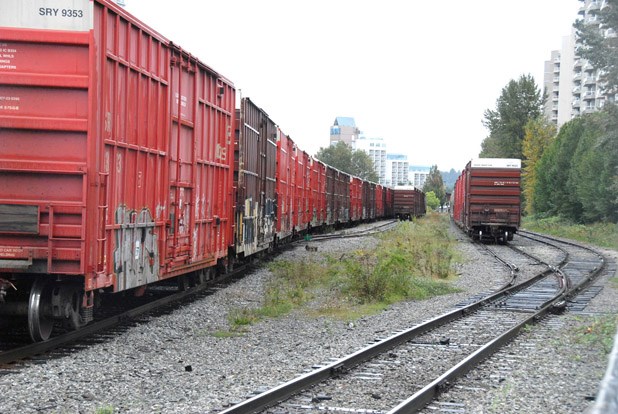New development taking place near railways must consider the potential impacts of setting up shop in those locations.
The Federation of Canadian Municipalities and the Railway Association of Canada teamed up to create new guidelines for new development in proximity to railway operations. The document hopes that by “building better today,” future conflicts can be avoided.
“Every time a development comes up in the area, one of the protocols is they need to talk to the railways early in the game,” said Coun. Chuck Puchmayr. “We found out during the Larco project, when they were doing the big presentation, no one had contacted Larco.”
The Larco proposal includes three highrises, as well as commercial space and parkland, on the riverfront site that’s located to the east of River Market (beside Westminster Pier Park). Another development is being proposed at 1000 Quayside Dr., which is to the west of River Market.
“There’s a real interest in building downtown and on the waterfront regardless of the rail,” Puchmayr said. “The developers that are engaging now feel very comfortable that these places are going to have a good sale.”
Puchmayr noted that both developments would need to consider the new railway proximity guidelines.
“There are two projects – there is one on either side of the market that are on the books. There’s a lot of work that’s gone into them,” he said. “We need to keep reminding people that they need to have that communicate with the railways early in the game as opposed to later.”
The City of New Westminster’s development services staff will be contacting railways to ensure they’re in the loop about proposed developments on the waterfront.
“Any mitigation is done by the developers, not the railways,” Puchmayr said.
Sapperton resident Natalie Dickson said the residents of the Anvil development in Sapperton were told their suites would contain air conditioning units because of the noise of nearby trains but they weren’t included in the final product.
Barry Waitt, the city’s senior planner, said he’d look into the issue of whether air conditioning was an amenity promised to people who bought units in the Anvil.
“It’s pretty standard when we have a building that’s close to something that generates a fair bit of noise like down by the railway tracks or along Royal here, that we get a sound attenuation study done. Usually what happens then is it is written into design standards in the developer’s building permit,” he said. “There is a covenant put on title that says they have to do these things.… Sometimes it’s still a challenge to actually make sure that it is physically done.”
Mike LoVecchio, director of government affairs for Canadian Pacific, said it’s often future owners, not the first generation owners, of homes near railways who raise specific concerns. LoVecchio said he is constantly amazed that developers’ drawings don’t include railways in their marketing literature
“I know that is intentional,” he said, “but to my mind, it is misleading right out of the box,”
Noted Puchmayr: “You’ll say a river runs through it, but you’ll never say a railway runs through it.”



